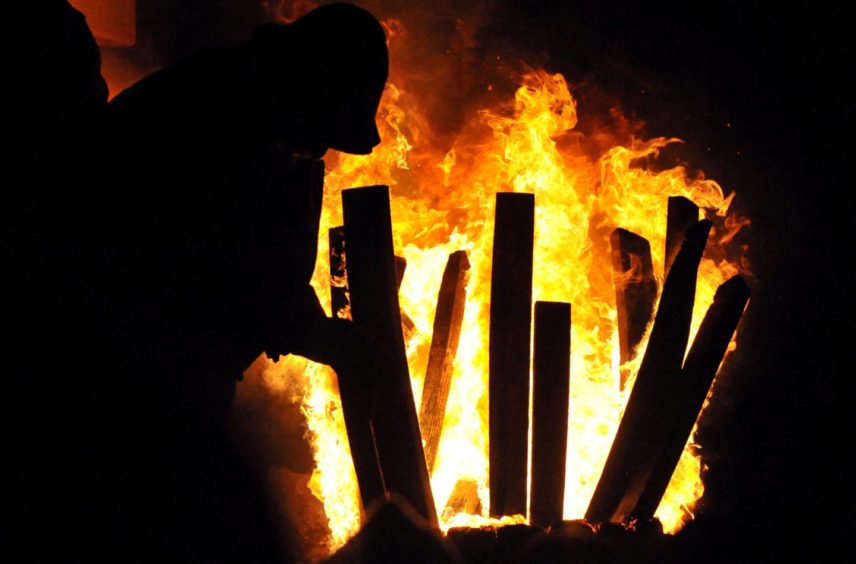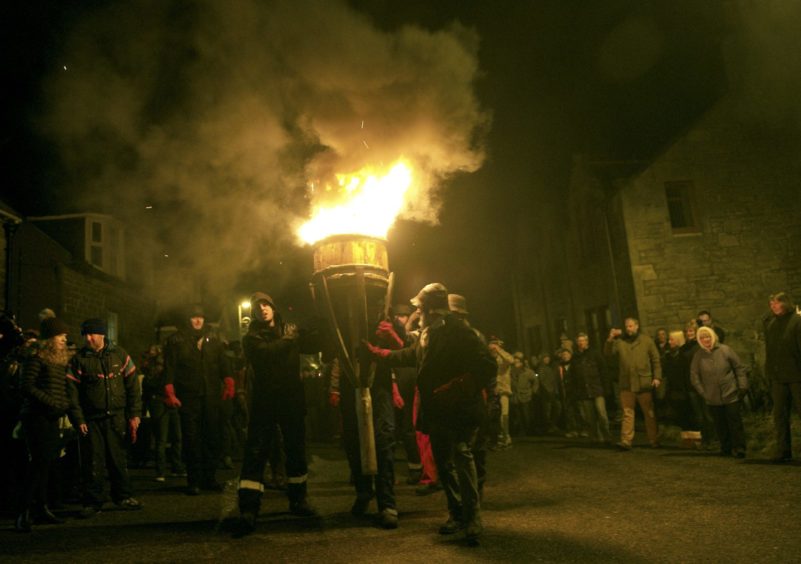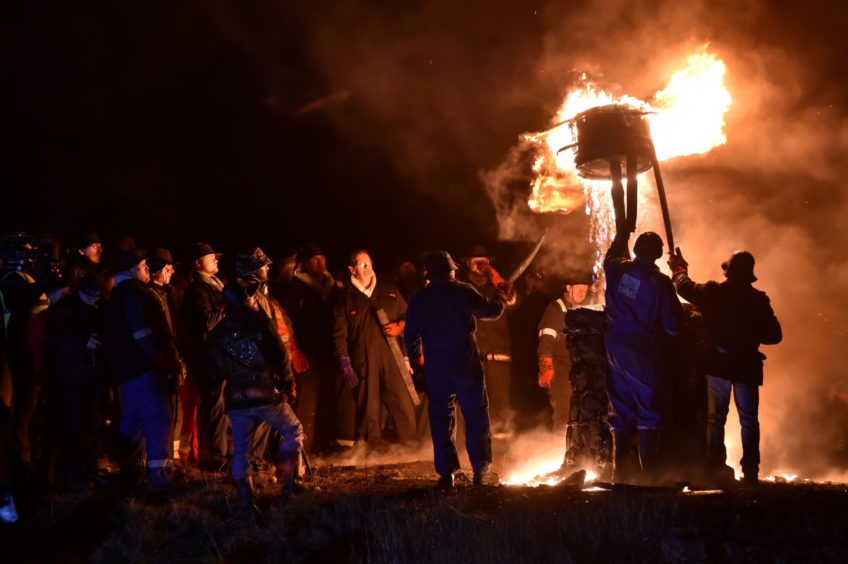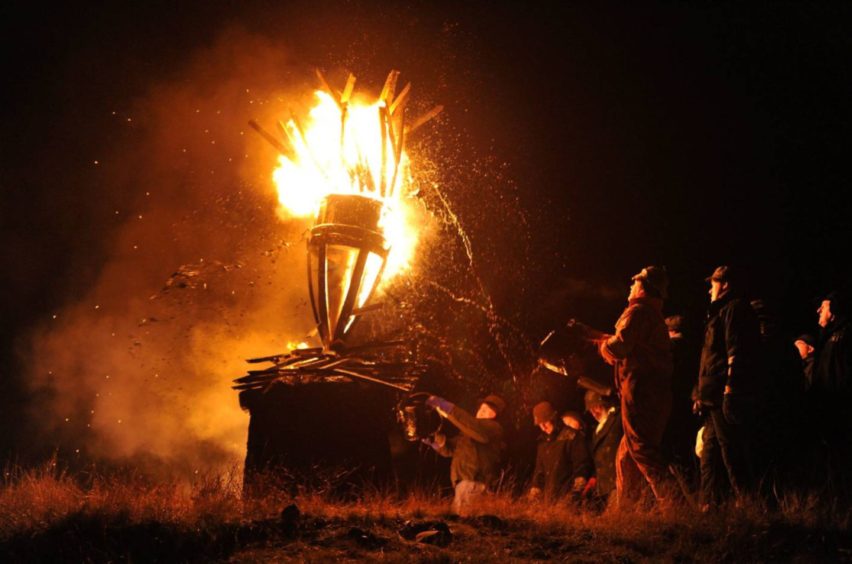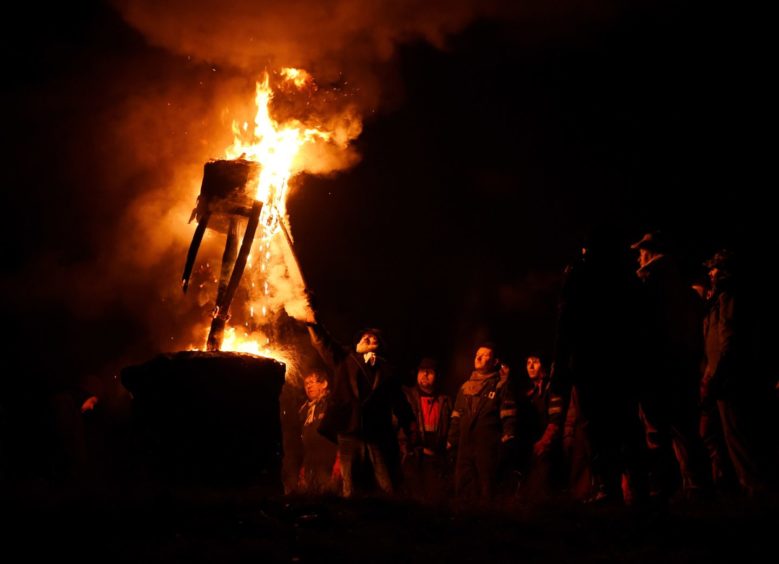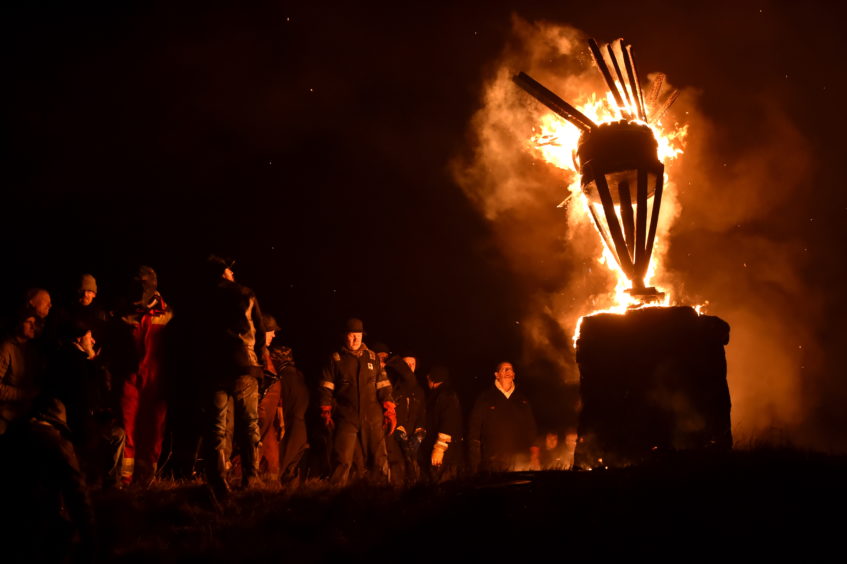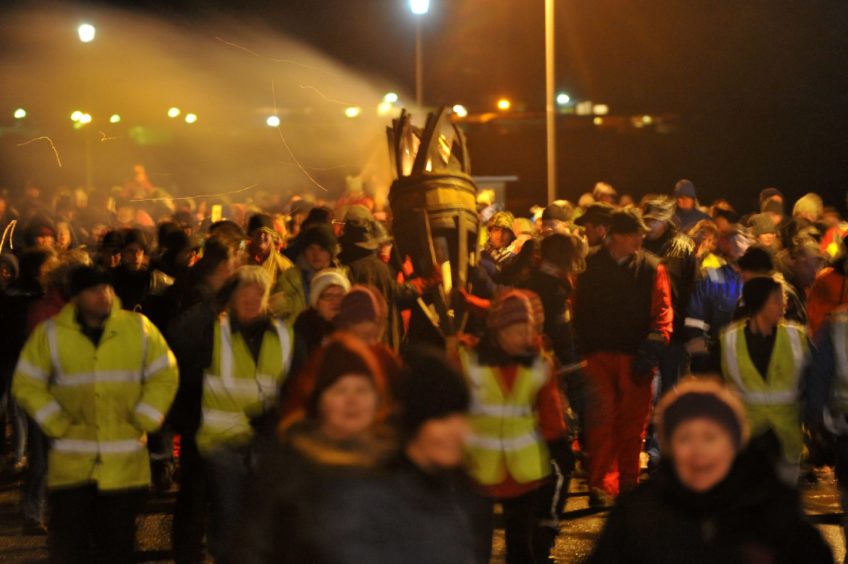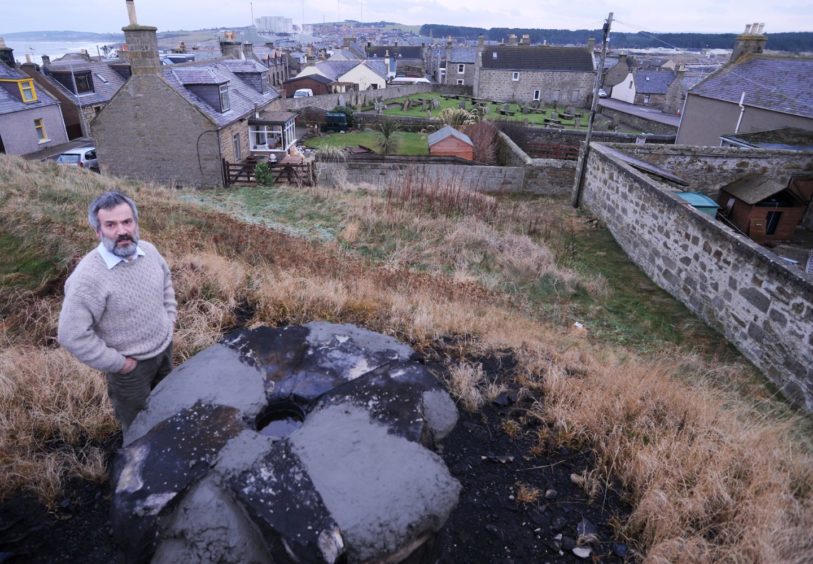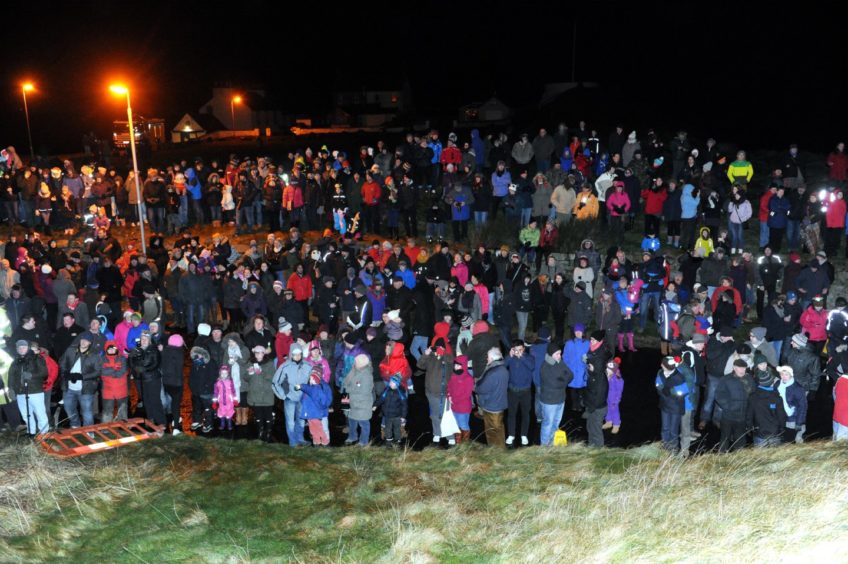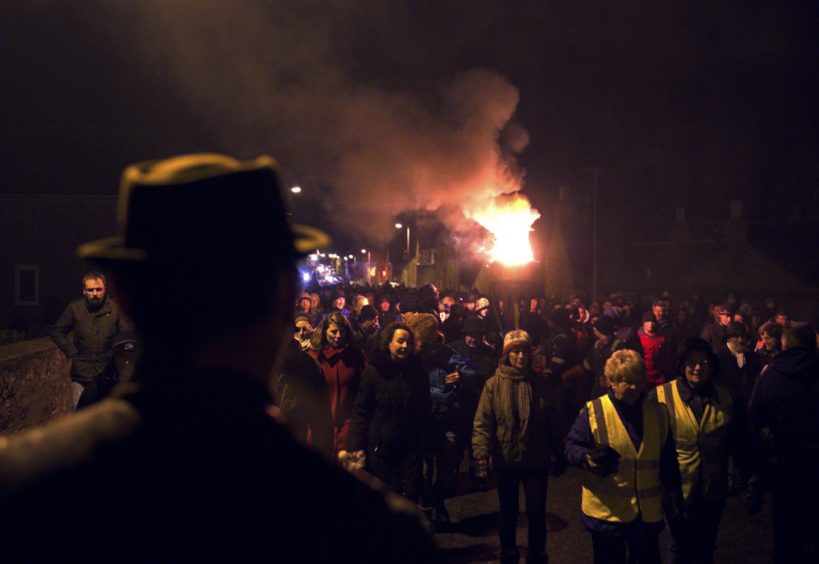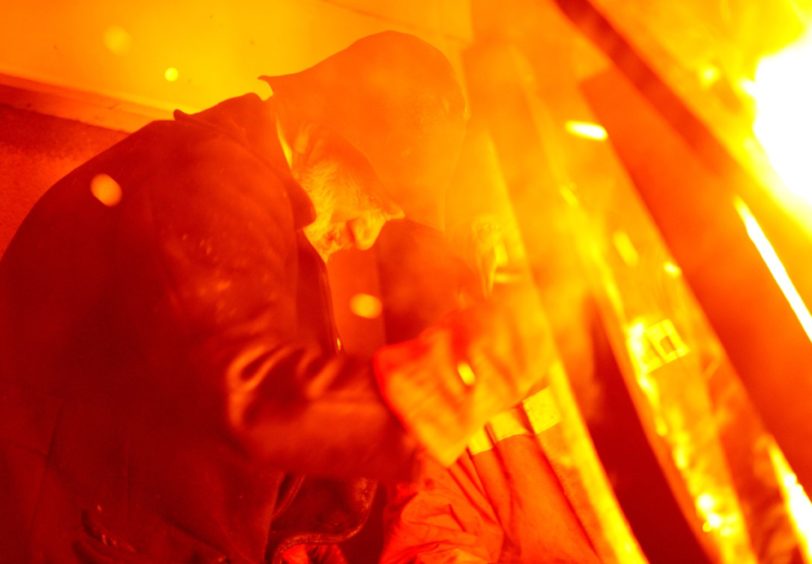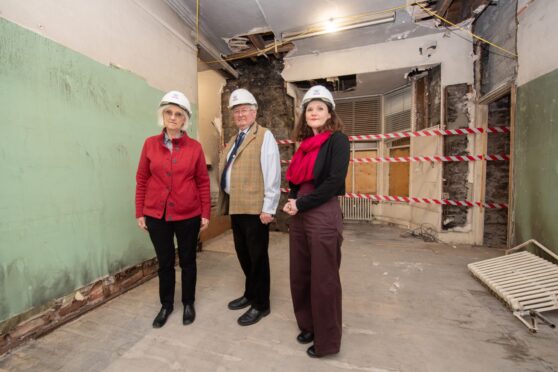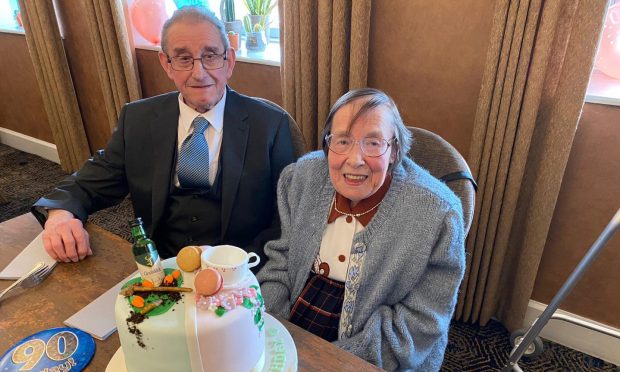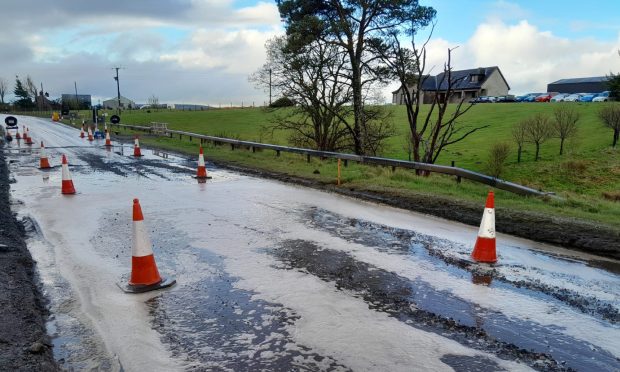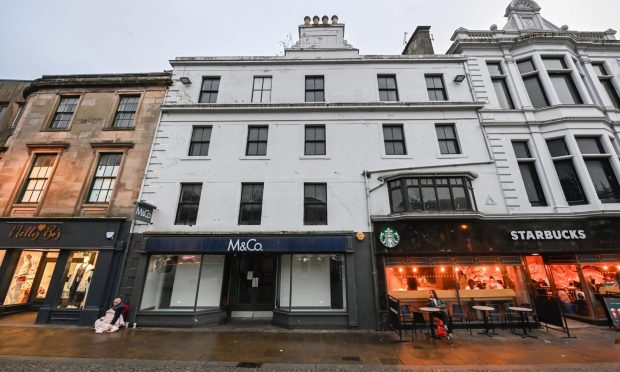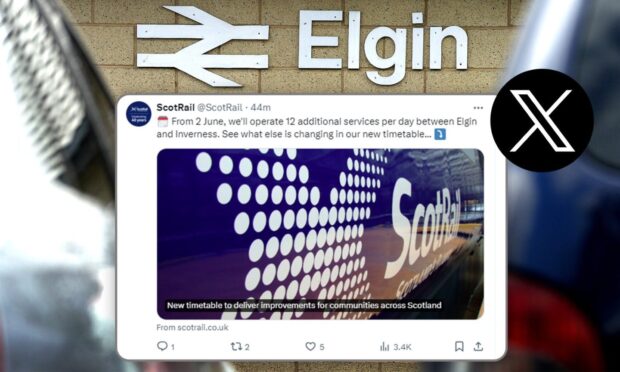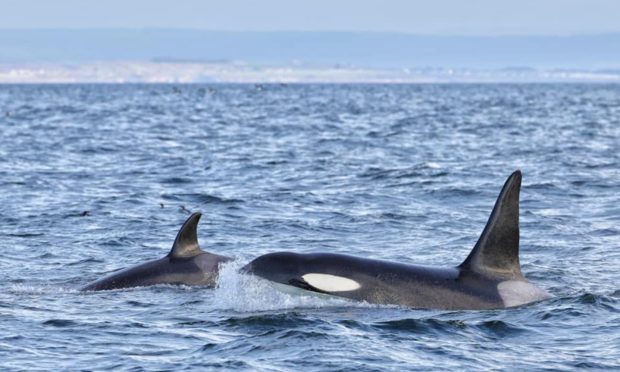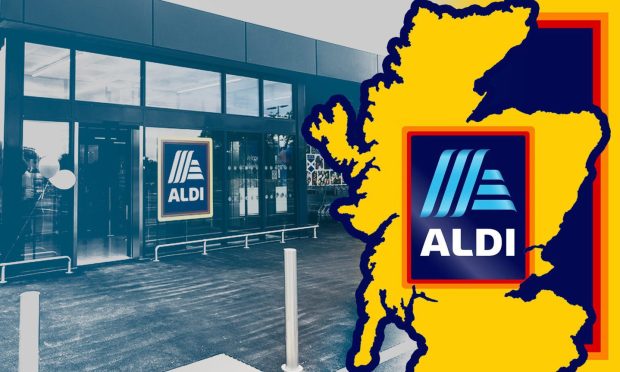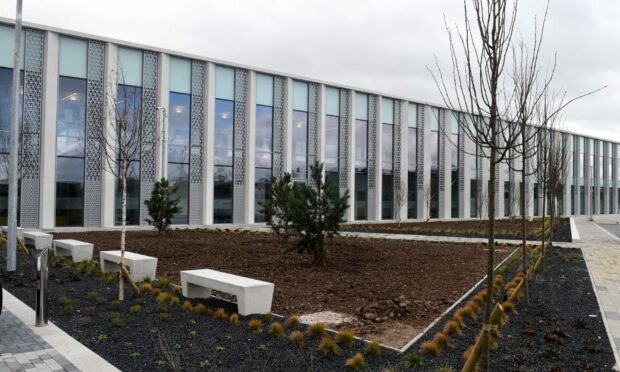For more than 1,800 years Burghead and its Clavie have burned bright on this day to herald the dawn of the Pictish new year.
However, tonight only darkness will fill the streets as the coronavirus pandemic has forced the Burning of the Clavie in Burghead to be cancelled for the first time since the Second World War.
Thousands ordinarily descend on the Moray community every year to marvel at the spectacle of the annual celebrations.
Countless Brochers also return home for the tradition with charred embers from the barrel sent to natives across the world to bring good luck.
What is the Clavie?
The Clavie is a 100kg wooden barrel mounted on a post.
Every year on January 11 the cauldron is filled with wood and tar before being ignited with peat from an ancient fireplace.
The flaming Clavie is then carried through the streets of Burghead while being passed between a crew of men made up from local families steeped in Broch heritage.
Eventually the centrepiece is hauled to the summit of Doorie Hill, which was once home to a massive Pictish fort three times the size of any other known in Scotland.
Huge crowds gather to watch the beacon as the flames continue to be fuelled until the barrel crashes to the ground.
What are the origins of the Burning of the Clavie in Burghead?
The exact origins of the Burning of the Clavie celebrations in Burghead have been lost to time.
However, what is known is that barrel burning and fire festivals were once common place along the Moray Firth coast.
Indeed, some similarities can be seen with the Hogmanay fireball celebrations in Stonehaven.
The date of the event is now unique though because when the rest of Scotland switched to the modern day calendar, Brochers persisted with the ancient Julian calendar, which was created by the Romans.
The difference means that Burghead continues to celebrate New Year on January 11 – nearly two weeks after the rest of the country.
The last time Burning of the Clavie was cancelled in Burghead
The pandemic means this year is the first time the Burning of the Clavie in Burghead has been cancelled since 1945.
The event was banned during the blackout of the Second World War due to concerns the inferno would be spotted by enemy pilots.
It returned again in 1946 with members of the crew who were lost in action represented by a close relative.
Since then, the Clavie has burned brightly on the Moray coast regardless of what the bitter north-east elements have thrown at it.
Every year organisers insist the celebrations will go ahead as planned – whatever the weather.
